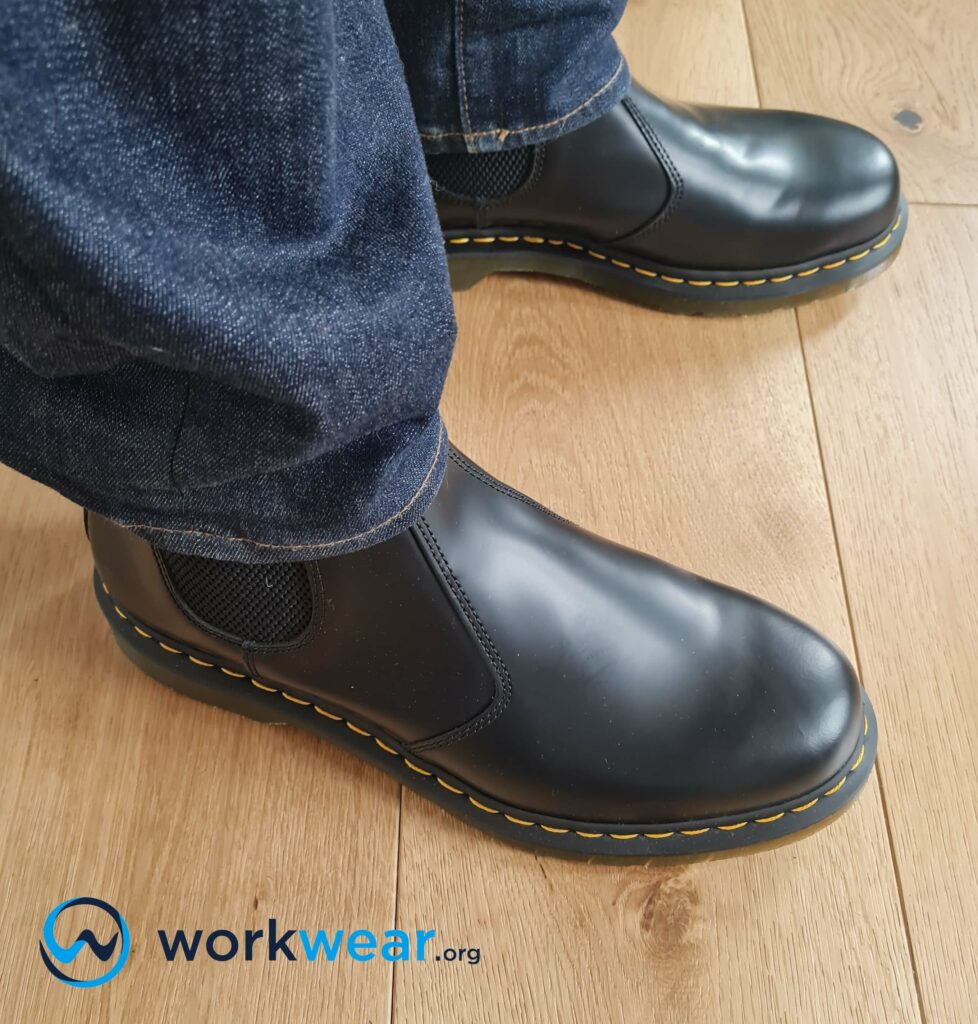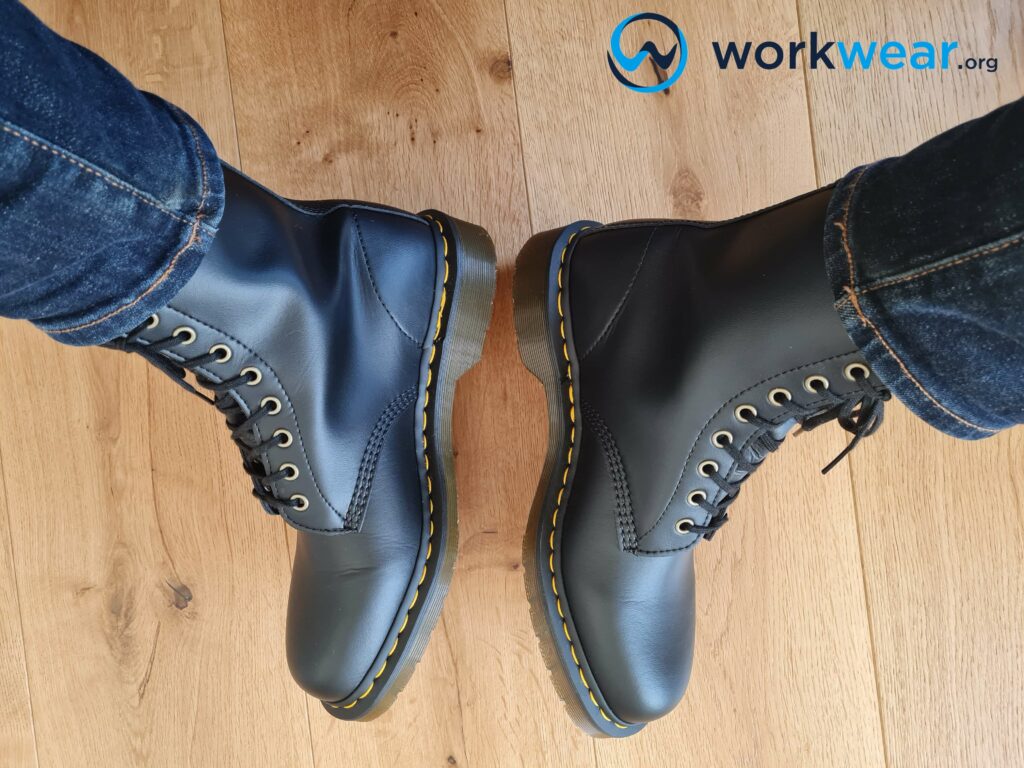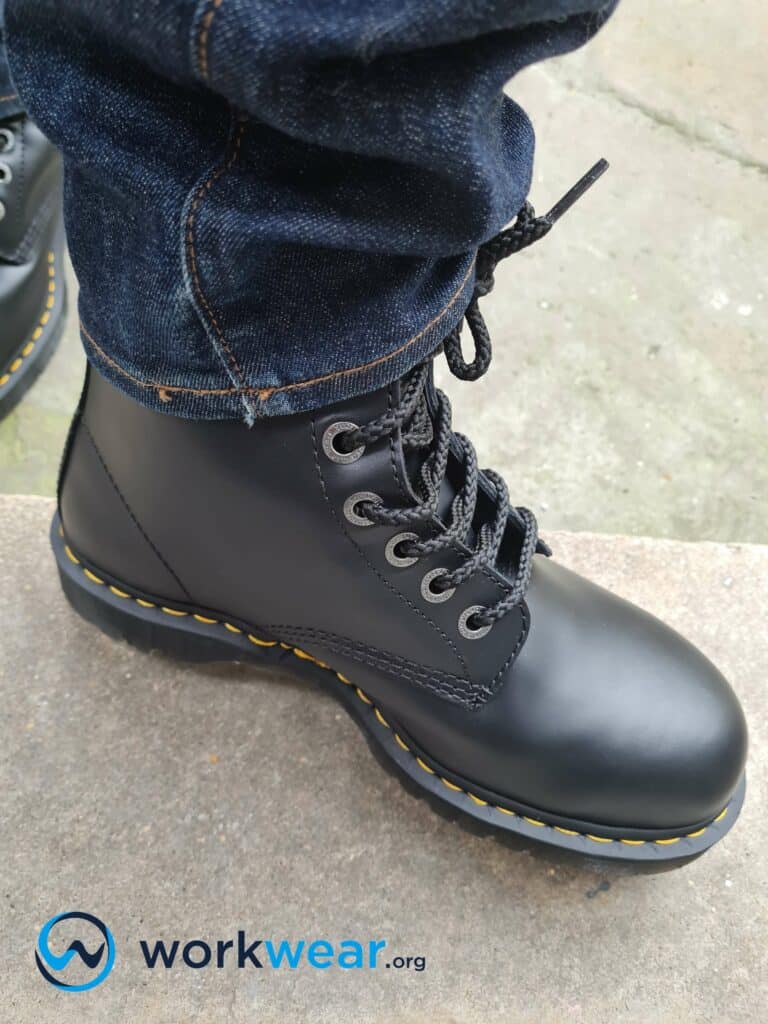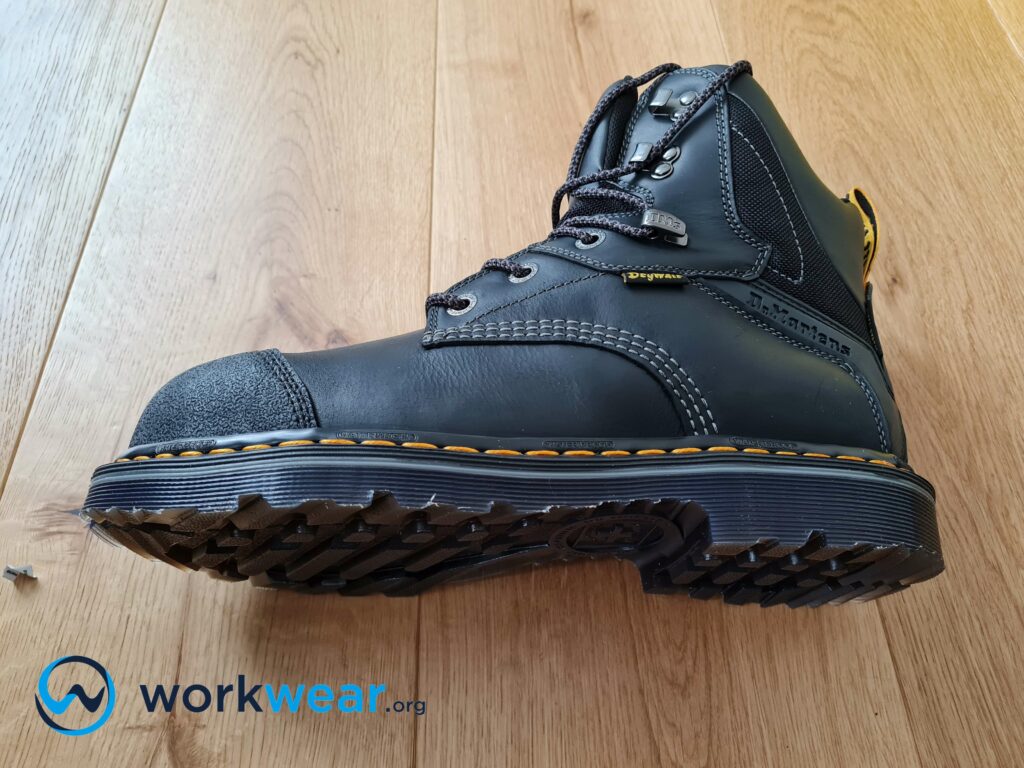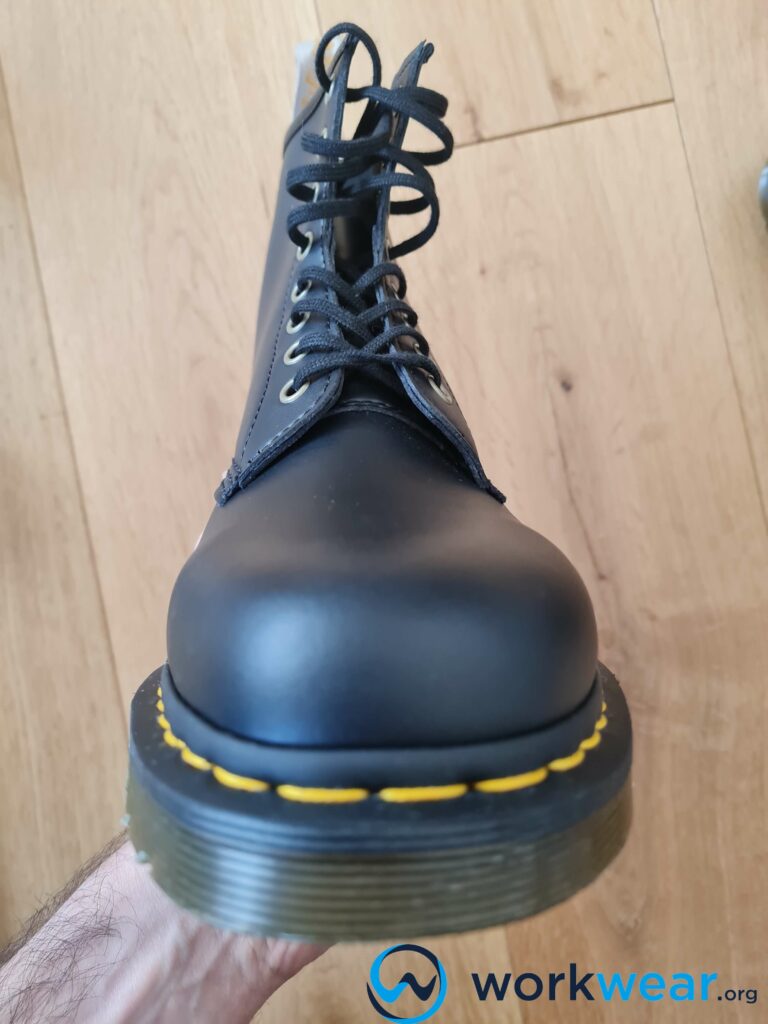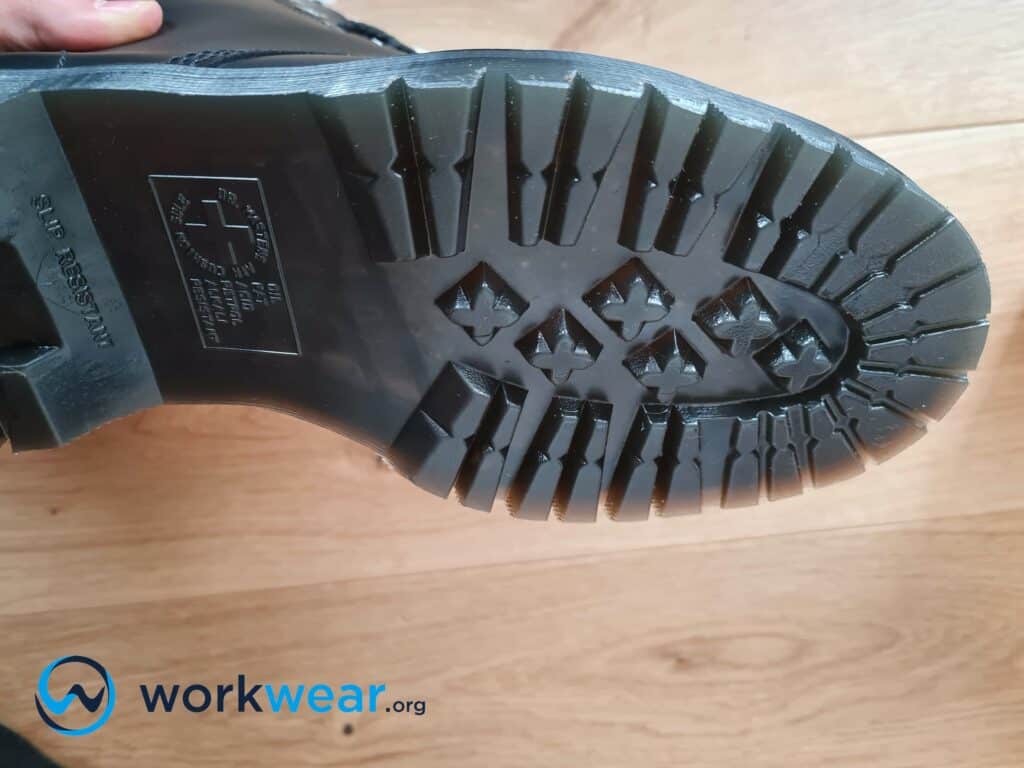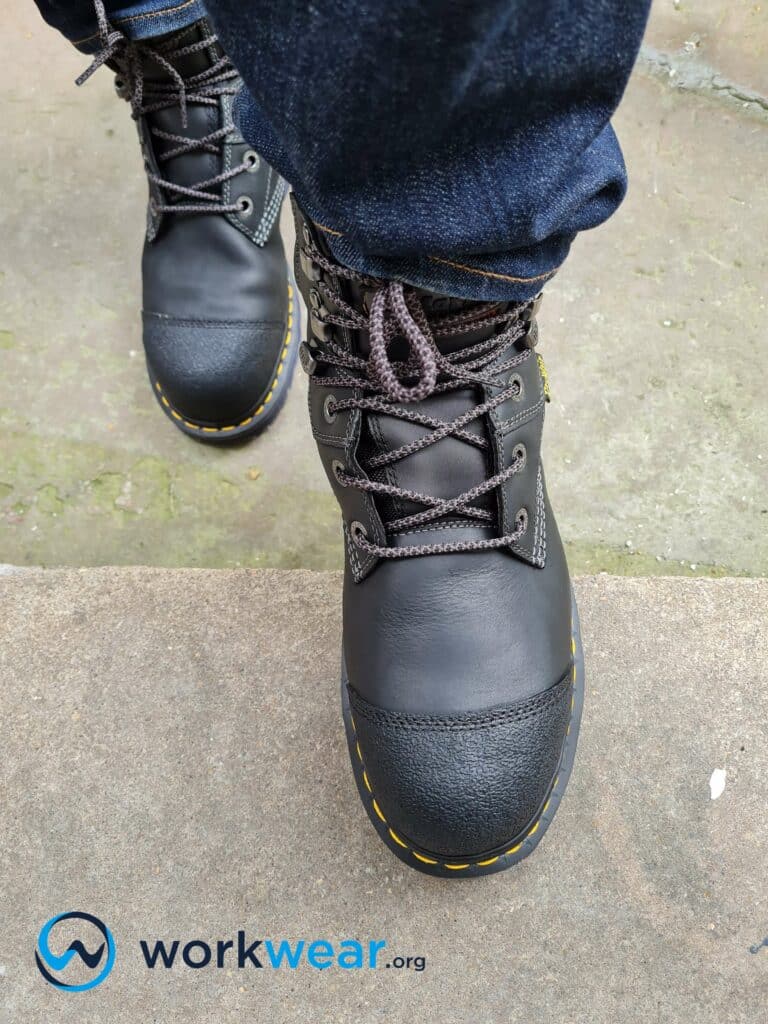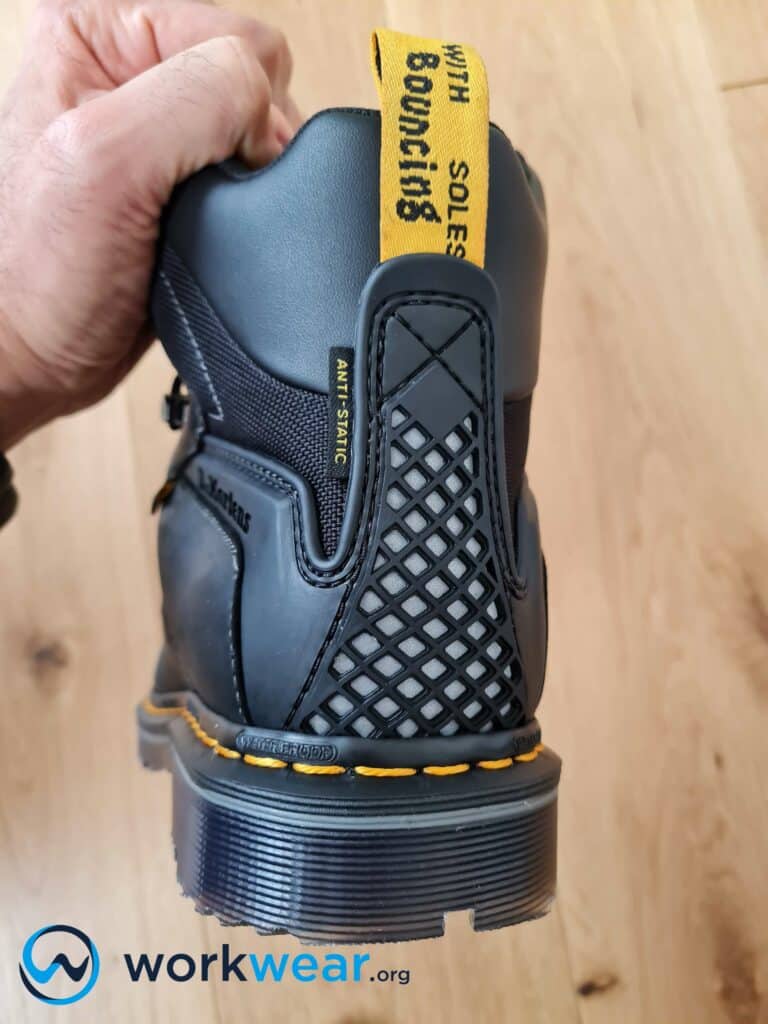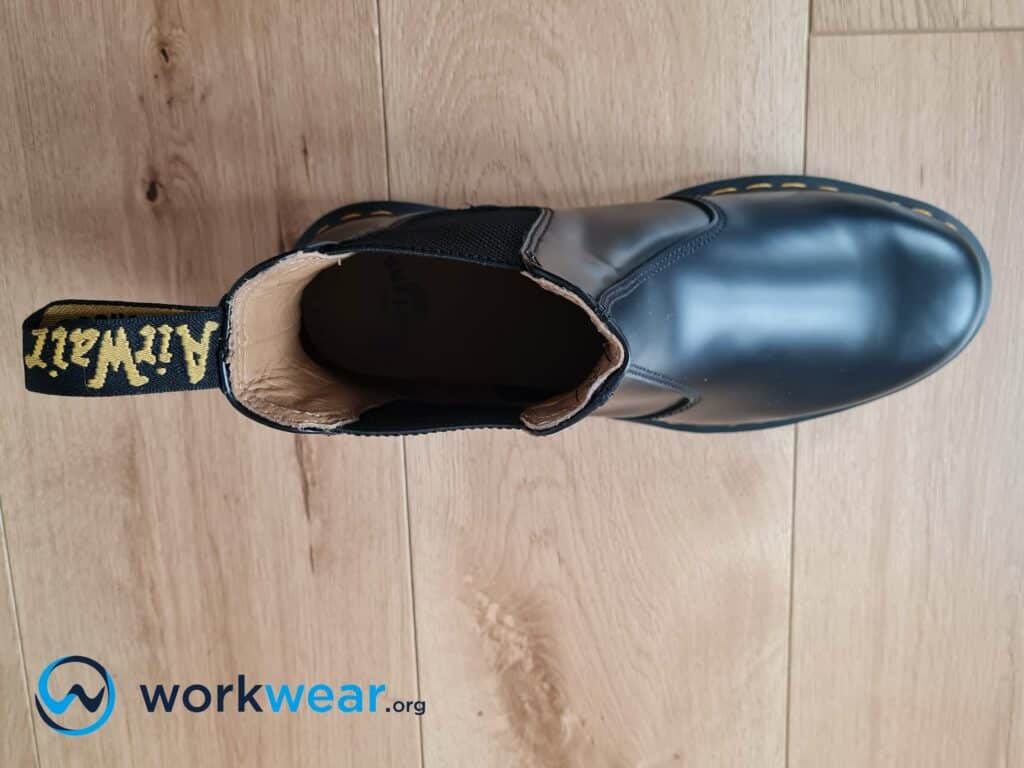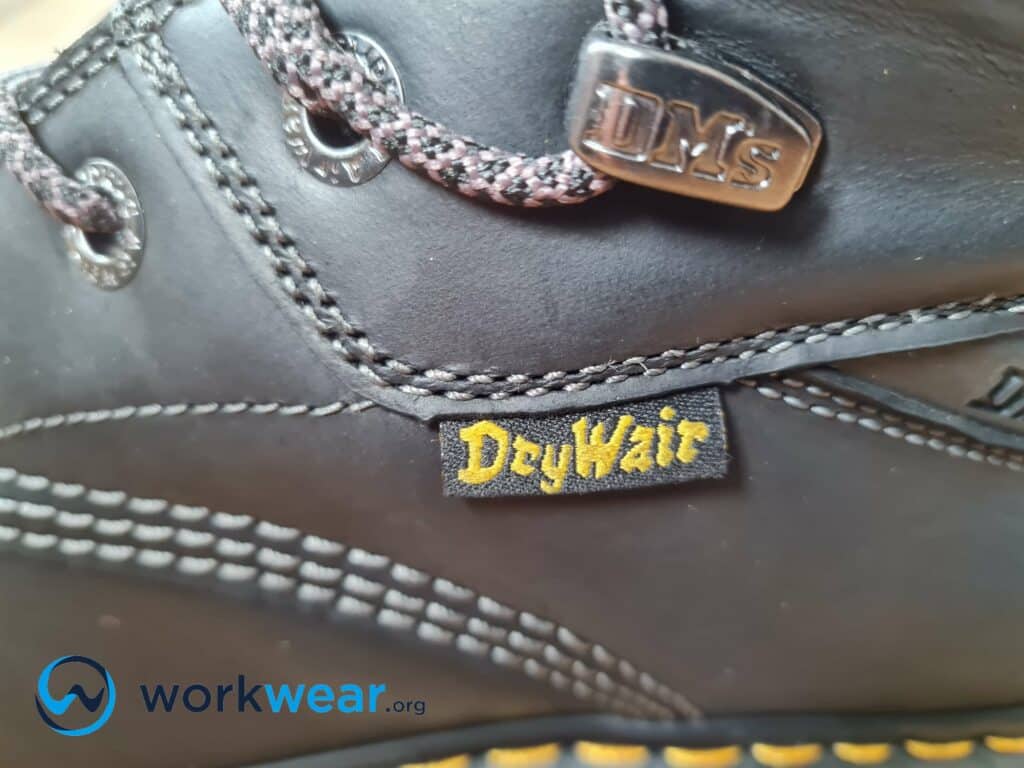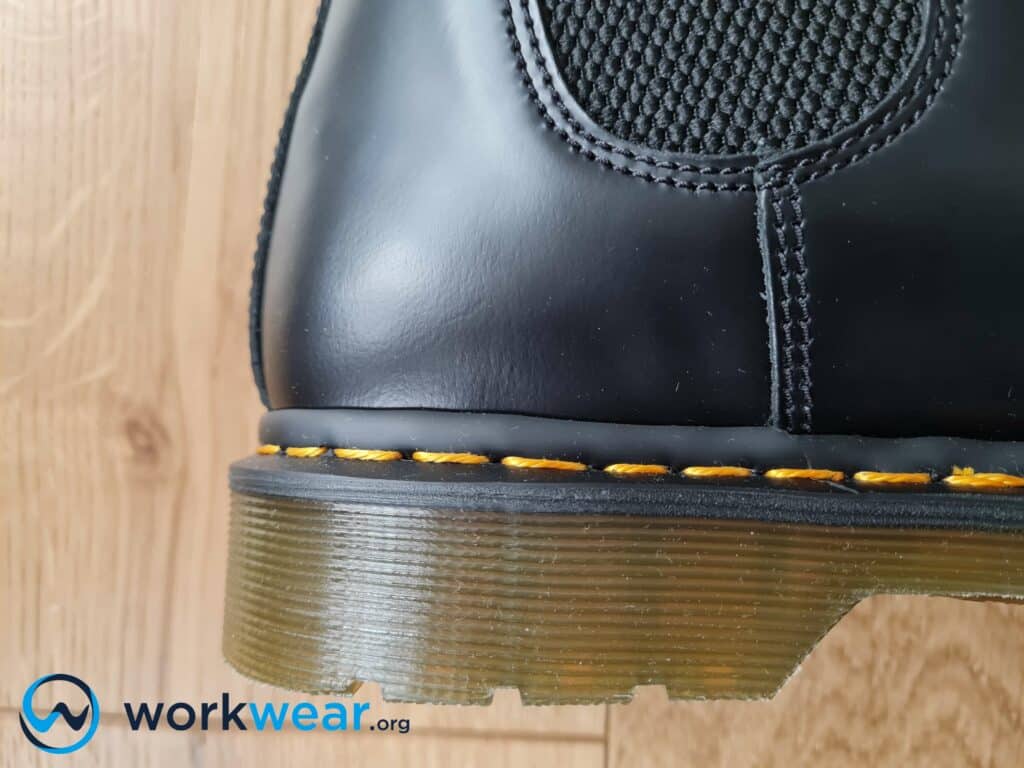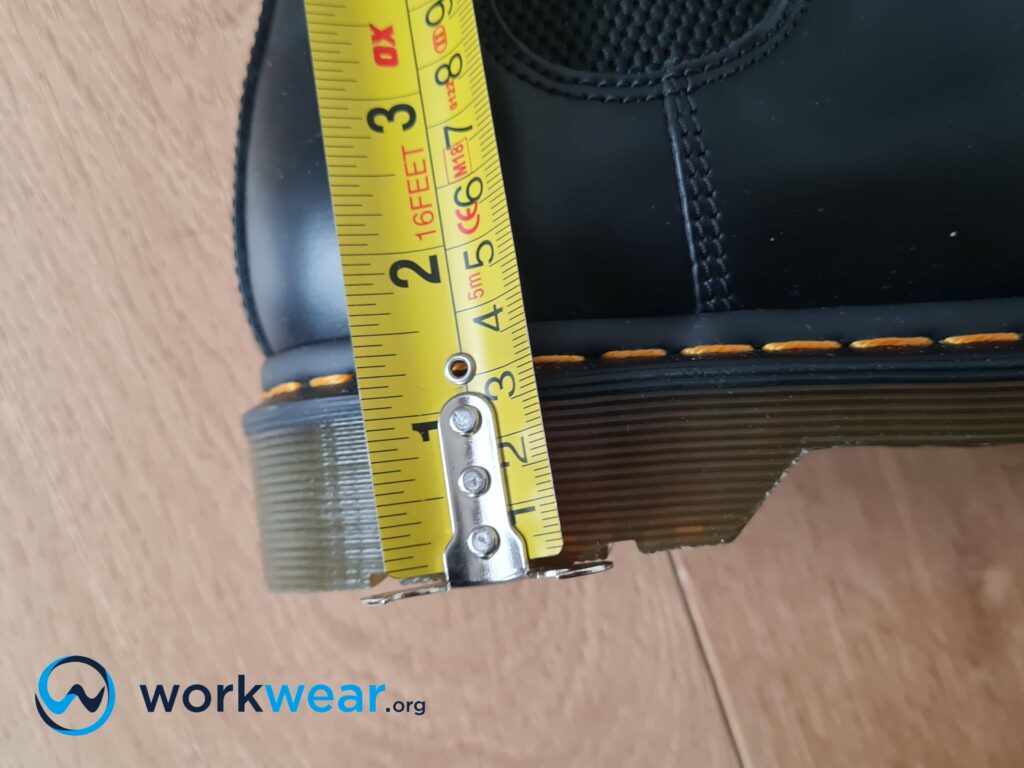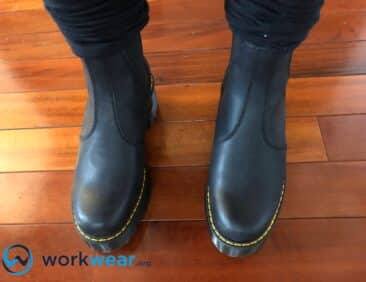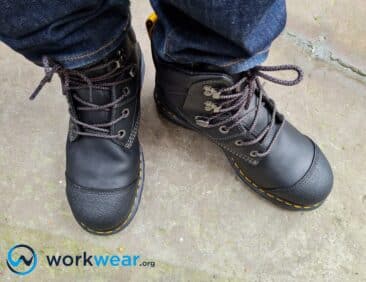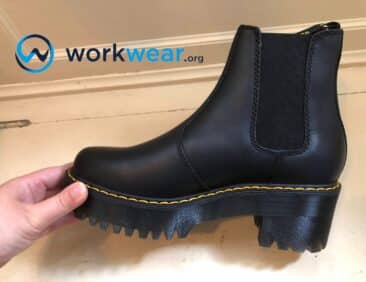Are Doc Martens Good Work Boots? Explained and backed by our testing!
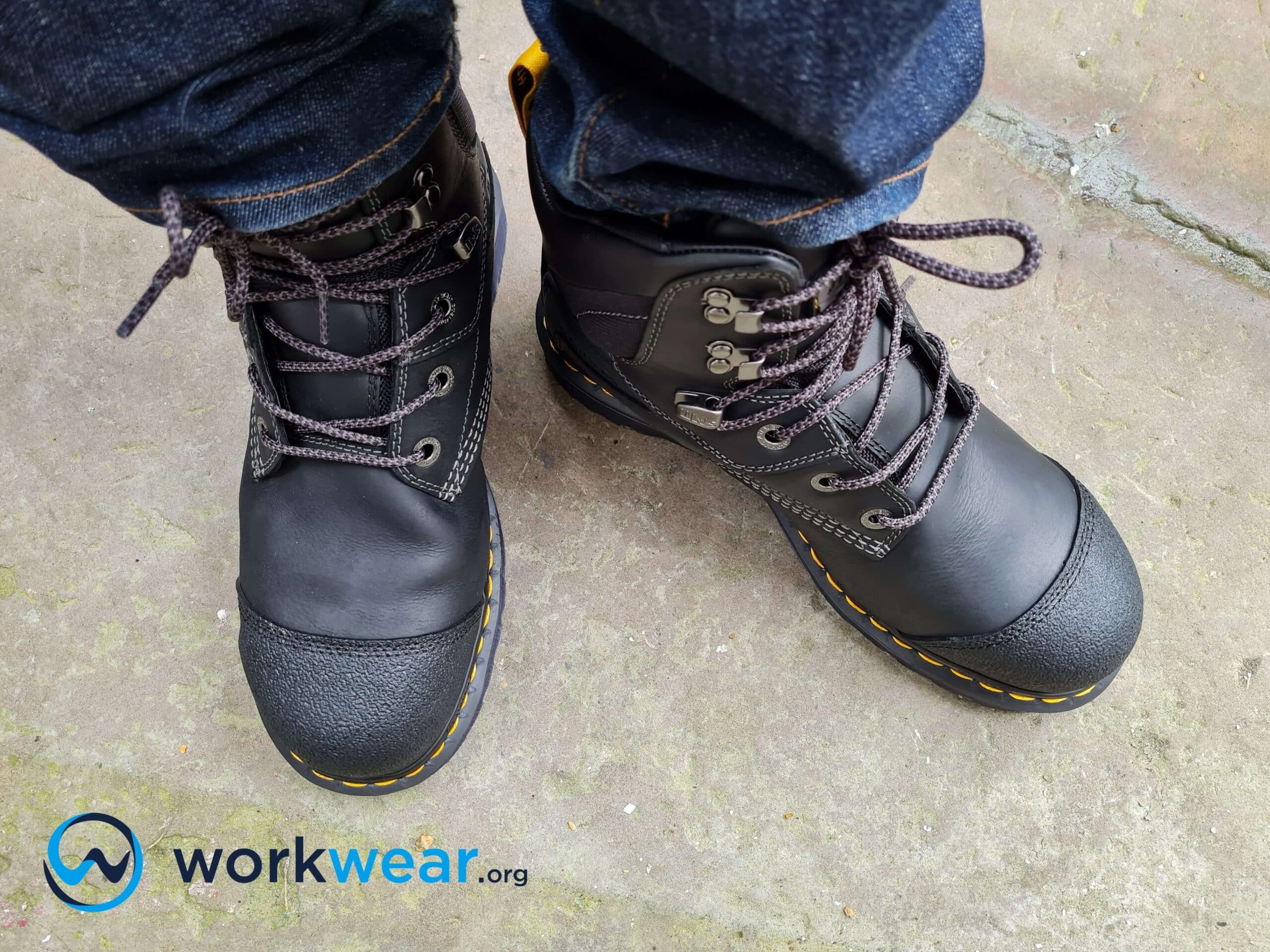
Doc Martens boots are known for their distinctive looks, which have become much-loved staples in countless wardrobes worldwide. These boots have bold silhouettes that can instantly elevate the stylishness of almost any outfit they’re paired with. Undoubtedly, Dr. Martens boots have cemented their place along with other iconic footwear brands, with timeless styles that can easily be enjoyed however the wearer wants to – in whatever setting the boots are needed.
With their hard-wearing profiles, it’s unsurprising that Doc Martens boots can easily be maximized in different job environments.
But how do they fare as work boots? Let’s investigate the details that make DMs perform well on the job and discuss the brand’s dedicated line of work boots and shoes.
Dr. Martens – A Brief History
The brand’s story begins in 1945 when a young soldier named Dr. Klaus Maertens created the design for an air-cushioned sole, a revolutionary take on the traditional hard leather sole structure.
Maertens had this idea while recovering from a broken foot and then proceeded to make a prototype which he then showed to his friend, a mechanical engineer named Dr. Herbert Funk. The two became partners, later advertising their product in international magazines. The revolutionary air-cushioned sole’s ad caught the eye of the Griggs Company, which has been manufacturing boots in England since 1901.
After getting an exclusive license, the Griggs Company dubbed the innovative sole, “AirWair”. It combined it with distinct features, including the iconic yellow welt stitch and a streamlined top with a bulbous tip.
On April 1, 1960, the timeless 8-holed Dr. Martens 1460 boot was launched, paving the way for more styles to be developed and rule the world of fashionable yet functional footwear.
Are Doc Martens Good Work Boots?
Dr. Martens are good to work boots indeed. They are well-known for their tough construction, premium materials, and flagship air-cushioned sole made of PVC, which provides excellent slip resistance, durability, and comfort.
Most classic Dr. Martens boots have soft-toe styles suitable for non-hazardous work settings with no risk of heavy falling items. Dr. Martens boots with the “Dr. Martens Industrial” badge, on the other hand, are designed as safety boots for tough, hazardous work conditions.
Why Dr Martens Boots stand out?
Both safety-toe soft-toe Dr Martens have distinctive features that differentiate them from other work boot brands.
AirWair Soles – All Dr. Martens boots have the same flagship PVC soles with a distinctively translucent look. Even the boots that aren’t designed for work have these AirWair soles (anti-slippery, acid- and oil-resistant), so they can offer stable walking experiences over varying ground conditions. These soles also have a bouncy effect that can improve walking comfort, with enough flex to make foot movements more effortless.
Genuine Leather Uppers – Doc Martens boots and shoes are made with 100% genuine leather, except those made with vegan leather. As a result, the uppers of these boots are sturdy enough to last long even when used in non-hazardous professional settings, offering better strength and durability than boots with lower-quality materials.
Streamlined Designs – Dr. Martens boots typically have sleek yet utilitarian profiles that blend well with uniforms and many other work attire options. These versatile styles don’t look out of place on the job site and can be maximized off the clock.
It’s worth noting that the styles built specifically for work purposes showcase enhanced features for better performance at work.
Features of High-Quality Doc Martens Work Boots
Regular Dr. Martens boots with soft-toe styles are already used for various work environments because of their hard-wearing structures. However, the boot styles specifically designed for professional use are packed with even more reinforced features.
These work boots – under the Dr. Martens Industrial line – are better equipped to withstand demanding work environments while helping the feet perform better and maintain comfort for far longer.
They’re typically not readily available in regular clothing outlets selling regular Dr. Martens footwear and are instead sold only in stores offering safety gear and PPE. It’s also worth noting that most of these work boots have extremely industrial looks, making them unsuitable for casual use.
Below are the enhanced features seen in most high-quality Dr. Martens Industrial line boots.
Industrial-Grade Leather
Most of the brand’s boots use high-quality leather, but Dr. Martens goes one step further with its work boots by using industrial-grade leather.
This type of full-grain leather is much stronger, enabling the boot to resist structural deterioration even with heavy use in challenging environments.
The reinforced material offers better abrasion resistance, helping preserve the boots’ premium appearance and function for a long time.
GRIP-TRAX Sole
Like other Doc Martens footwear, most of the brand’s work boots have the iconic PVC sole – but these ones are upgraded with the exclusive GRIP-TRAX tread.
This enhancement delivers superior traction on tricky surfaces, making it easier to maintain stable footing when moving over slippery or uneven ground conditions.
The boosted slip resistance makes the work boots a suitable partner for safer walking on challenging terrains and even slick indoor surfaces.
Steel Toe Caps
Steel toe caps are fitted into some of the Dr. Martens Industrial footwear line work boots.
These toe caps form barriers inside the toe box, guarding the toes so they won’t easily get crushed by impact and compression threats. The steel toe work boots offer a higher degree of foot safety when working in hazardous work environments where there are risks of heavy items that can suddenly roll or drop from raised areas on the work site.
Electrical Hazard Protection
Electrical hazard protection is featured in some Doc Martens work boots.
This enhancement offers a secondary layer of safety against the threat of electric shock in the work area in case there’s accidental contact with electrically charged objects.
Breathable and Moisture-Wicking Lining
The signature Softwair sock liner is built into some of Dr. Martens’ work boots to combat uncomfortable heat and sweating.
The liner features a unique grid system encouraging the air to flow continuously throughout the boots to prevent the build-up of excess warmth. It also lets sweat dissipate quickly, keeping the feet dry and fresh throughout the day.
Waterproof Construction
The industrial-grade leather that’s used in the brand’s work boots comes with waterproof qualities.
The material stops accidental liquid spills in the work area from instantly penetrating the boots.
The boot’s liquid resistance is strengthened further with waterproof welt construction to seal out mud, water, and other liquids, ensuring the feet stay dry in wet surroundings.
Puncture-Resistant Midsole
Puncture resistance is offered in some work boots – such as the Dr. Martens Duxford Steel Toe Boot.
The midsole is built with a puncture-resistant plate to block sharp objects from penetrating the bottom of the boots.
This enhancement keeps the feet safe against serious piercing injuries from accidentally stepping on broken glass, nails, and other puncture risks in certain work environments.
Personal Testing Experience
It’s time to share our experiences while testing two superb-quality work boots from Dr. Martens. The 2976 Slip-Resistant Boot showcases the proprietary GRIP-TRAX tread delivering an enhanced grip, making it easier to walk over slippery and uneven ground conditions while maintaining secure footing. The Chelsea design is almost effortless, so slip into and out of, with the side gussets ensuring that the boot’s opening widens just enough for comfortable foot entry and exit. Memory foam pods are built into the heel and forefoot areas for maximum cushioning, but we discovered soon enough that the boot feels quite heavy, and the sole isn’t too flexible. Meanwhile, the Duxford Work Boot has steel toe caps to shield against compression and impact threats. It uses waterproof welt construction and leather to seal out wetness, ensuring all-day foot dryness even in wet work conditions. The puncture-resistant midsole blocks sharp objects from penetrating the foot from the bottom, while a slip-resistant sole makes it safer to navigate tricky surfaces. However, the boot feels too heavy and can be uncomfortable if used for long hours of walking.
Conclusion
Doc Martens manufactures boots that are loved not only for their bold styles but also because of their superior functionality on and off the work area. The main product line consists mostly of soft-toe boots ideal for casual and non-hazardous jobs. It’s worth knowing, though, that the brand has its line of footwear specifically designed for industrial use. These work boots come with the streamlined profiles Dr. Martens is known for but are enhanced with high-performance features. These reinforcements include safety toe caps, waterproofing, amplified slip resistance, electrical hazard protection, puncture resistance, breathable and moisture-wicking components, and industrial-quality leather.
FAQs
- Do all Doc Martens work boots come with lace-up designs?
- No, some boots come in Chelsea or pull-on designs as well, such as the Dr. Martens 2976 Slip-Resistant Boot
- Are the stylish soft-toe boots from Doc Martens suitable for work?
- Yes, the brand’s soft-toe boots offer reliable quality and strength to suit the work requirements of baristas, retail sales staff, and other jobs in non-hazardous settings.
- Do regular boots from Doc Martens offer water resistance?
- The high-quality leather used in most Dr. Martens boots doesn’t allow liquids to be absorbed instantly. However, unless specified to be waterproof, the boots are not recommended for use in wet environments where the liquids can eventually seep into the footwear.
- Are Doc Martens work boots comfortable straight out of the box?
- Generally, Dr. Martens boots must be broken in first to soften the leather and make it more pliable. Once they’re broken in, the boots will mold to the feet’s contours and flex more easily – resulting in better foot comfort and mobility.
678+
Products Reviewed
24+ Years
Combined Experience
500+ Hrs
Field Testing
